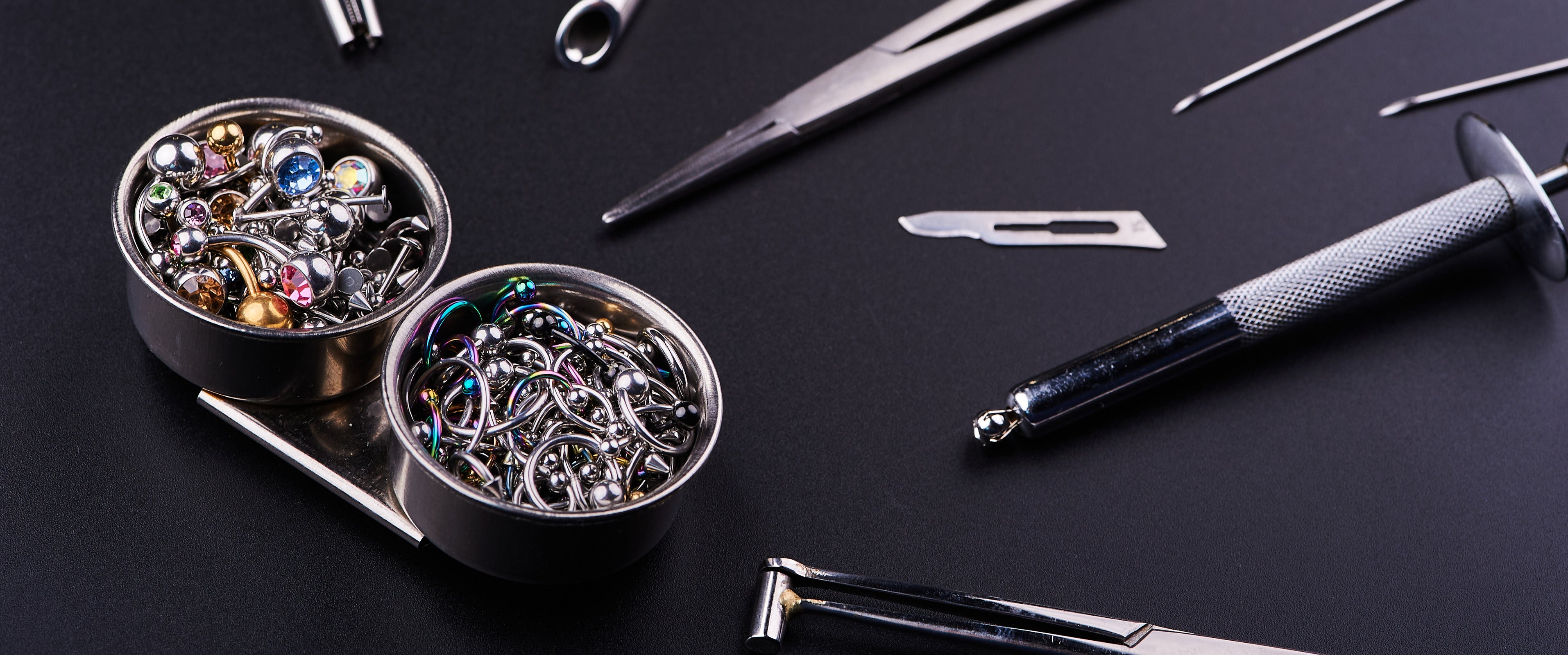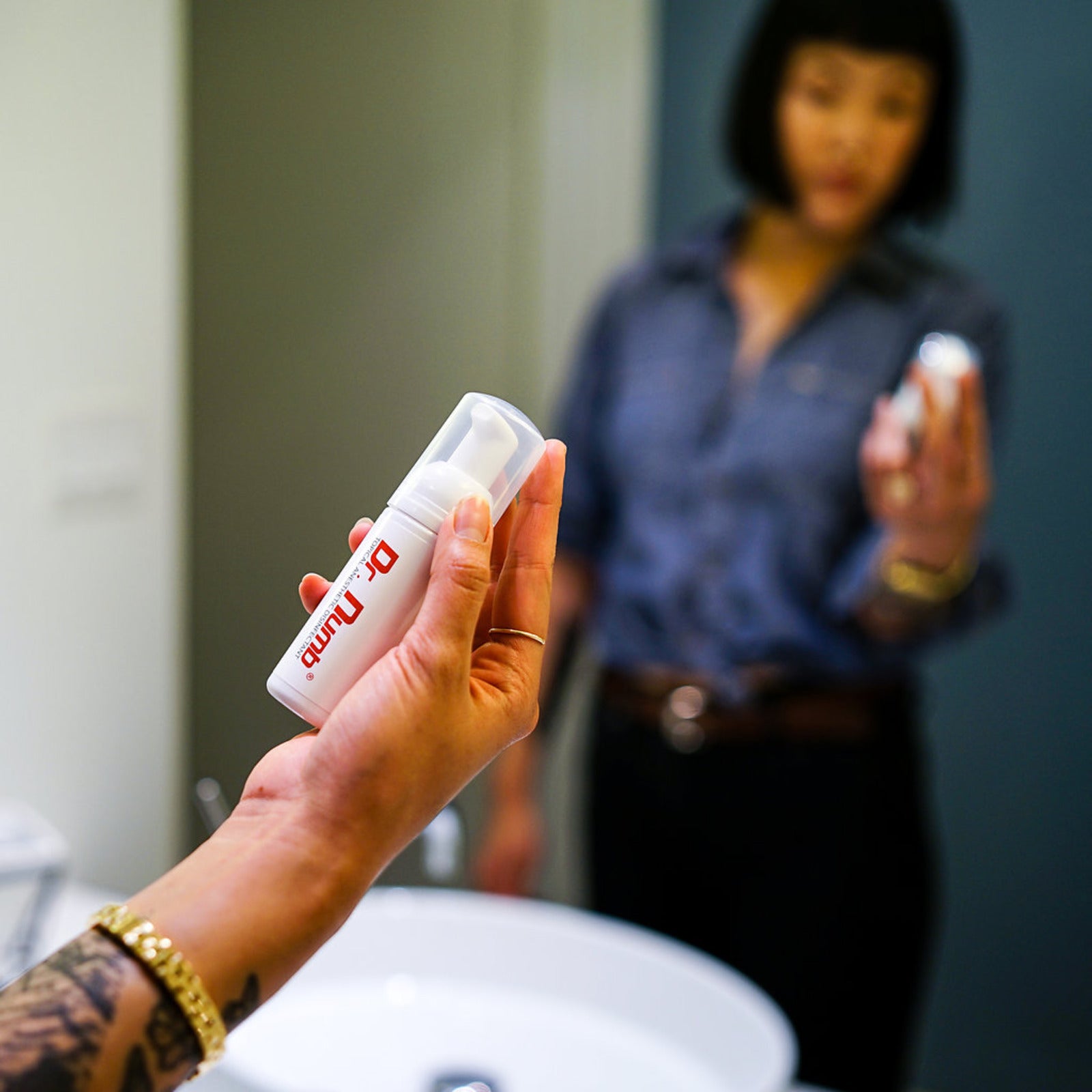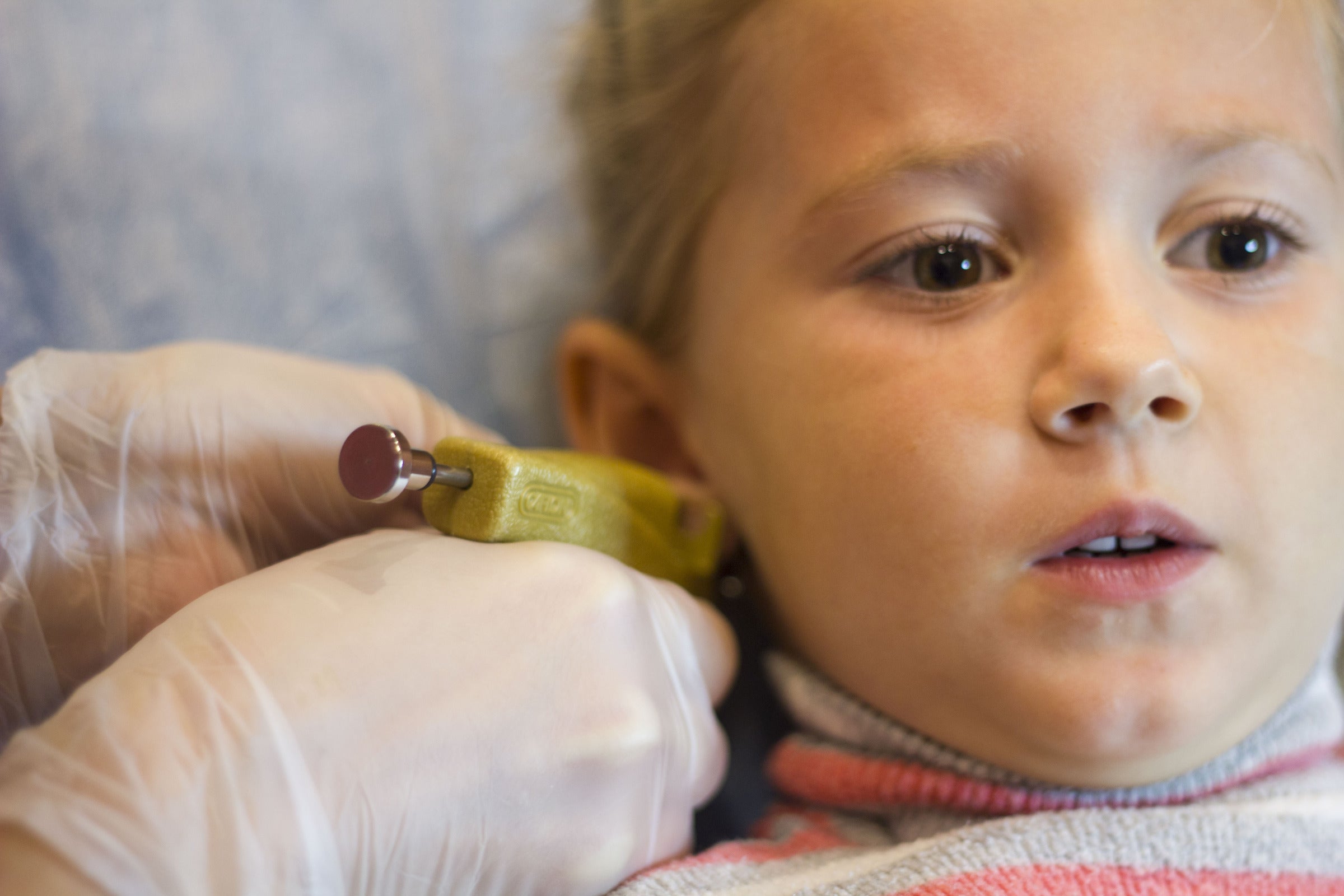It's a common concern, and understandably so. After all, piercing needles aren't exactly known for their pleasant sensations. The degree of pain varies depending on various factors impacting the piercing experience. These factors can help you have a more comfortable and successful piercing.
Piercers use super sharp needles and long angles to slice through your skin when they do needle piercings. It sounds scary, but it's no different from a doctor using a hand. Pain will only last for a few seconds, but beyond that, there will be minor discomfort.
In this blog post, we'll explore the pain associated with piercing needles, the factors contributing to piercing pain, and pain management techniques to help you make an informed decision about your next piercing.
How Painful is a Piercing Needle: 4 Factors to Consider

Several factors can affect how much pain you will feel during the piercing process. Understanding these factors can help you prepare for your piercing and make the experience as comfortable as possible. We will explore the factors that affect piercing pain in more detail.
Location of The Piercing
The area of your body where you want to get pierced can significantly impact your pain threshold. As a general rule, remember that the thinner the skin, the more painful the piercing. Here are some examples:
- Piercings on fleshy areas like the earlobe or belly button tend to be less painful because the skin is thicker.
- Conversely, piercings on bony areas like the nose or eyebrow can be more uncomfortable because the skin is thinner.
Skin Thickness and Elasticity
Your skin's thickness and elasticity can also significantly affect how much pain you experience. If your skin is very thin or tight, you may feel more discomfort during the piercing process.
- Individuals with thicker, more supple skin may experience less pain because the needle will glide through smoothly.

The Skill of The Piercer
The proficiency level of your piercer is also a determining factor in how much pain you'll feel during the piercing. A skilled piercer will make the process as quick and painless as possible by selecting the correct needle size, angling it appropriately and using the proper technique.
- A less skilled piercer may cause more pain by selecting the wrong needle size or improperly placing the piercing.
The Type of Jewelry Used
The type of jewelry you choose can influence the pain level during the piercing and the healing process. For example:
- Hoops are more challenging to insert, so you may feel more discomfort when the piercer threads the jewelry through the body.
- Straight barbells cause less irritation during the healing process, which can lessen the pain.
The Pain of Piercing Needles: Aftercare and Relief
While the pain level can vary depending on where the piercing is located and your pain tolerance, it's essential to remember that proper aftercare can contribute to your overall healing experience. We'll explore the importance of aftercare and pain relief methods and identify signs of infection during the healing process.
The Importance of Proper Aftercare

Aftercare is a critical component of piercing healing that can significantly impact your overall experience. Proper aftercare can help prevent infections and promote faster healing times, reducing the risk of complications. Below are some essential steps you should take to ensure true healing:
- Follow the aftercare instructions provided by your piercer. They will typically include washing the piercing twice daily with a saline solution and avoiding certain activities like swimming or using harsh soaps.
- Keep the piercing clean, and avoid touching it with dirty hands.
- Avoid wearing tight clothing or jewelry that may irritate the piercing.
- Ensure you get enough sleep and a healthy diet to support a speedy recovery.
Pain Relief Methods During The Healing Process
Pain and discomfort are expected during the piercing healing process, but there are several methods you can use to relieve pain. Here are a few pain relief methods that you may want to consider:
- Over-the-counter pain relievers, acetaminophen, and ibuprofen alleviate pain. Follow the recommended dosage and check with your piercing professional to avoid drug interactions.
- Applying a cold compress over the piercing can help ease swelling and provide pain relief.
- Soaking the piercing in a warm saline solution can help reduce pain, soothe irritation, and encourage drainage of discharge or pus.
How to Spot Signs of Infection or Other Issues
As one of the risks of getting a piercing, it's essential to know what to look for, like allergies or keloid formation. Here are some symptoms to look out for:
- Redness, swelling, and pain around the piercing site.
- Discharge that has a foul odor or yellow/green color.
- Experiencing a fever, chills, or fatigue.
- Formation of bumps or nodules around the piercing area.

Piercing Needle: 3 Pain Management Techniques
When it comes to getting a piercing, one of the biggest concerns for many people is the pain associated with it. Several pain management techniques can be employed to make the process more comfortable. Here are some key options to consider:
Local Anesthesia and Numbing Agents
- Local anesthesia involves the application of a numbing agent directly to the area being pierced. This can be done through injections, topical gels, or sprays.
- Numbing agents like lidocaine or benzocaine can also desensitize the area and minimize pain during the piercing process.
- While these methods can effectively reduce pain, they may not suit all piercings or individuals.
Painkillers and Medications
- Over-the-counter painkillers like ibuprofen or acetaminophen can help manage pain before and after getting a piercing.
- Stronger prescription pain medications may be necessary for more invasive piercings or if you have a low pain tolerance.
- It's essential to follow the recommended dosage for any medication to avoid adverse side effects.
Psychological Distraction Techniques
- Distraction techniques such as deep breathing, visualization, or listening to music can help shift your focus away from the pain of the piercing.
- Some people find that bringing a friend or loved one with them for support can help ease anxiety and make the experience less stressful.
- Relaxing techniques like yoga or meditation leading up to the piercing can also help manage anxiety and minimize pain.
Analogy & Scales of Piercing Needle Pain

While the appeal of adorning one's body with shiny new jewelry is undoubtedly strong, the pain accompanying this act is a common concern for many. We will explore the pain scale of piercing and provide insights into the anatomy of a piercing needle.
The Pain Scale of Piercing
Pain is subjective and can vary significantly from person to person. However, there are generally accepted pain scales that help describe the level of discomfort experienced during a piercing.
The most commonly used pain scale for piercings ranges from 1-10, with 1 being the least painful and 10 being the most. It is important to note that pain tolerance, piercing location, and other factors can affect the overall pain level experienced during a piercing.

Conclusion
We hope this blog post has provided valuable insights into the factors contributing to pain during a piercing. Reducing anxiety, managing expectations, and increasing pain tolerance can make the piercing process less painful and more manageable. Following proper aftercare techniques can promote healing and ease discomfort after the piercing.
Remember that every person’s pain tolerance is different, and what’s manageable for one person might be unbearable to another. Deciding if getting a piercing is worth the temporary discomfort is up to you. Just prioritize proper preparation, aftercare, and communication with your piercer, and you'll be on your way to a successful and enjoyable piercing experience.










![The Recovery Time and Stages of Nipple Piercings [Best Practices]](http://drnumb.com/cdn/shop/articles/How_Long_Do_Nipple_Piercings_Take_To_Heal__3_Stages_Explained.jpg?v=1714373243)

